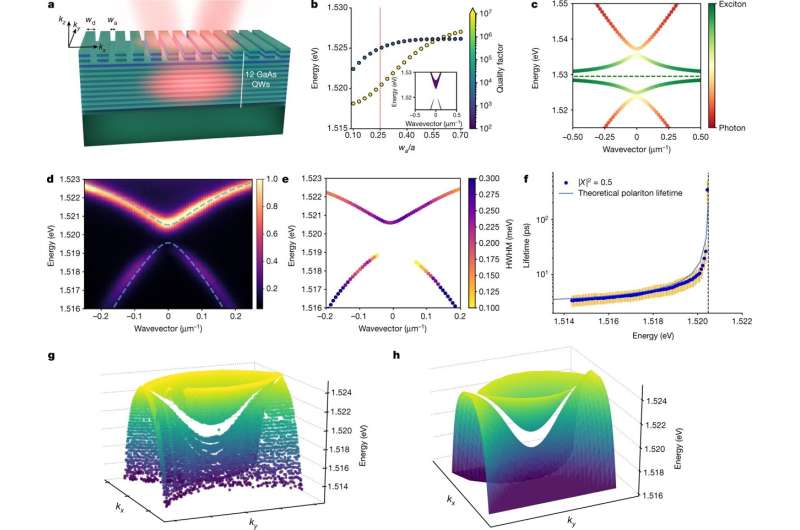June 14, 2022 report
Physicists demonstrate polariton Bose-Einstein condensation using a planar waveguide

A team of physicists from CNR-Nanotec in Lecce, Università di Pavia, Princeton University and Université de Lyon has demonstrated Bose-Einstein condensation using a planar waveguide where semiconductor quantum wells were strongly coupled to a bound state in a continuum (BIC). In their paper published in the journal Nature, the group describes how they designed and built a BIC supported waveguide and used it to demonstrate polariton Bose-Einstein condensation.
BICs are topological states in a quantum system that have unique properties—their energy is in the spectrum of modes that propagate in the space surrounding them. They do not interact with other states in a continuum, and their energy, which is deemed real, has an infinite Q factor. They also cannot radiate into a far field. Such states can exist in acoustic, electronic and photonic systems. In this new effort, the researchers were working with them in a photonic system, where crystals are used to improve their non-linear effects.
The work by the group involved use of the properties of a BIC to demonstrate polariton Bose-Einstein condensation (where a gas cools to near absolute zero forming a new state of matter) in a planar waveguide (a device that guides light in a vertical direction.)
In their work, the researchers built a waveguide using 12 layers of gallium arsenide—each layer was separated by barriers. The five layers at the top were then etched with a 1D grating that was designed to ensure a resonant BIC state with the excitation of quantum wells in the layers. Doing so also ensured that the matter and light were strongly coupled. This led to the formation of exciton-polaritons that, because of the BIC, were localized and had a linewidth that was infinitely narrow.
The researchers then ran their device using laser pulses aimed at the waveguide and in so doing showed polariton Bose-Einstein condensation—they observed doubly-peaked emissions near the BIC edges, the linewidth growing narrower and the appearance of a blueshift. They also showed that the BIC properties seen by the polaritons were both above and below the threshold level of excitation associated with the condensation.
More information: V. Ardizzone et al, Polariton Bose–Einstein condensate from a bound state in the continuum, Nature (2022). DOI: 10.1038/s41586-022-04583-7
Journal information: Nature
© 2022 Science X Network




















